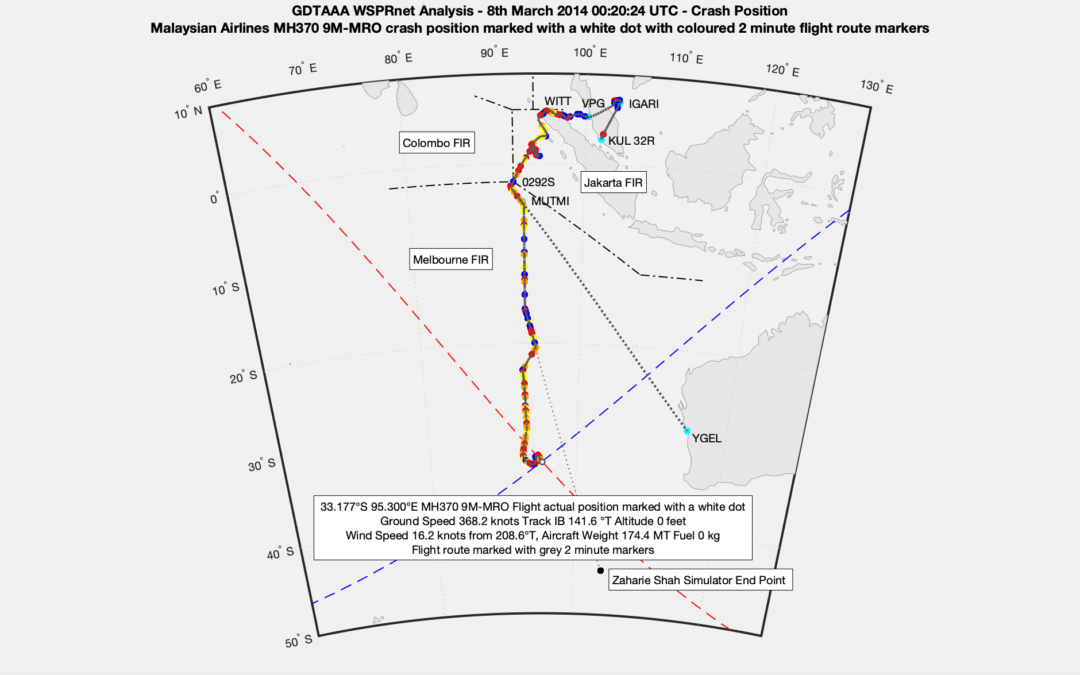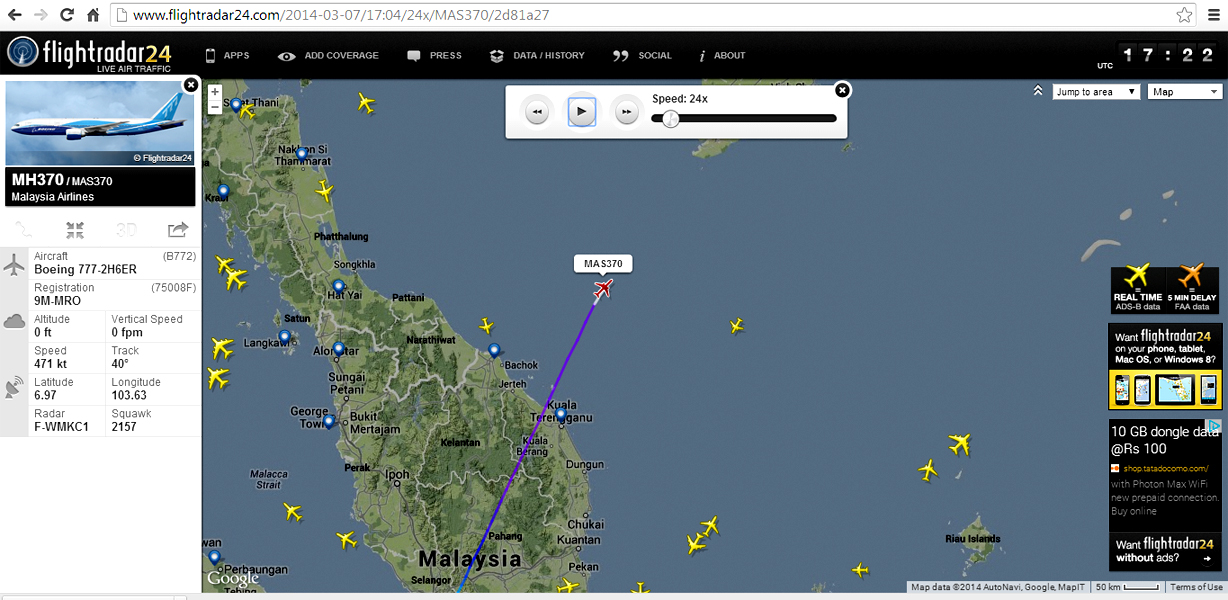
After crossing the Malayan peninsula, it stayed close to the boundary between Kuala Lumpur and Jakarta FIRs. It did a 180, then flew along the border between the Kuala Lumpur and Bangkok FIR. When the plane disappeared from secondary radar near IGARI, it was on the boundary between Singapore and Ho Chi Minh FIRs. These are aerial territories under the jurisdiction of different air traffic controllers. Was Indonesia’s failure to detect MH370 related to its peculiar flight path? After its initial diversion, MH370 passed mostly along the boundaries between Flight Information Regions, or FIRs. It’s not hard to imagine a sleepy radar operator, in the middle of the night, expecting nothing to happen, overlooking the passage of a blip. It’s likely significant that, of all the interceptions that I mentioned at the top of this piece, all took place in the middle of the day. We make errors.”Įspecially in the middle of the night. “You’ve got a human operator looking at a display, quite easy for people to miss things. “There’s humans in the loop, isn’t there?” he said. Of course, he added, there is always the human factor to consider. I can’t think of anything that would prevent it. “Yes, it should do,” Pearson said, “because it’s got lots of corner effects on it, if it was flying in a straight line across a radar screen I can’t think why it shouldn’t show up. Today he works as an engineer for the defence consulting firm Qinetiq.įirst, I asked Pearson if a 777 would make a big, clearly visible radar target. Steve Pearson is a former RAF navigator who later worked as an avionics and mission systems engineer for the Royal Air Force Warfare Center. So how could the Indonesians have seen nothing?įor insight, I turned to someone with long experience with military radar systems. Afterwards, according to the consensus view, the plane’s track should have stayed within the radar’s viewing range as it headed west, made a turn to the south, and proceeded into the southern Indian Ocean.

The radar track released by the Australian Transport Safety Board (ATSB) in June shows that the plane came within 60 nautical miles of the installation before it disappeared from Malaysian and/or Thai military radar. After being impounded for a few days the plane and its crew were allowed to leave.īased on its specs alone, Radar Unit 231 (so much easier to spell than Lhokseumawe!) should easily have been able to detect MH370. It turned out to be a US Air Force Special Operations plane carrying five crewmembers the pilot claimed he had been running low on fuel and didn’t realize that his paperwork to enter the country had expired. The plane was ordered to land at Sultan Iskandar Muda airport in Banda Aceh. It demonstrated its capability last year, when the unit detected a Dornier 328 twin turboprop entering Indonesian airspace from the west. The system, Indonesian military officials say, is capable of detecting aircraft up to 240 nautical miles away. The unit is equipped with a Thomson-CSF TRS-2215 radar, the type pictured above. The westernmost part of the country is covered by the Indonesian Air Force’s Radar Unit 231 at Lhokseumawe in Aceh, Northern Sumatera. In the last month alone, its air force has intercepted three civilian planes which wandered into the national airspace without first getting the proper permission. In fact, though, Indonesia has quite a capable air defense radar system, and one which it utilizes quite aggressively. Why shouldn’t MH370 have passed through without a trace?


So one might reasonably assume that the country lacks the ability to comprehensively monitor its airspace. With a land area the size of Western Europe, it spans the same east-to-west distance as the continental United States. Indonesia is a developing country, and a sprawling one at that.

This is an issue that has gotten less attention than it deserves, and for understandable reasons. Yet Indonesian military officials insist that nothing appeared on their radar screens. If, as is generally presumed, the plane took a sharp left turn shortly afterward and flew into the southern ocean, it should have remained visible to Indonesian radar for more than an hour. One of the many baffling aspects of the MH370 disappearance is the absence of radar data after the plane left Malaysian primary coverage at 18:22 UTC.


 0 kommentar(er)
0 kommentar(er)
